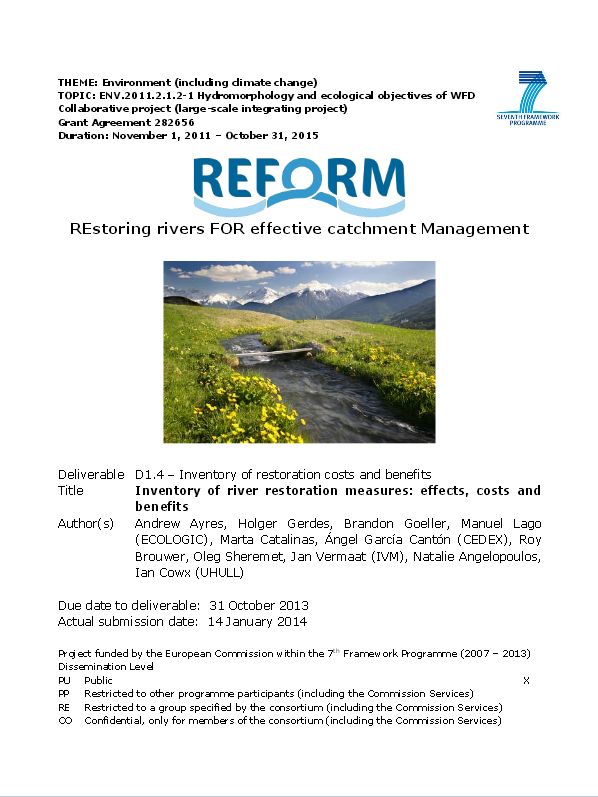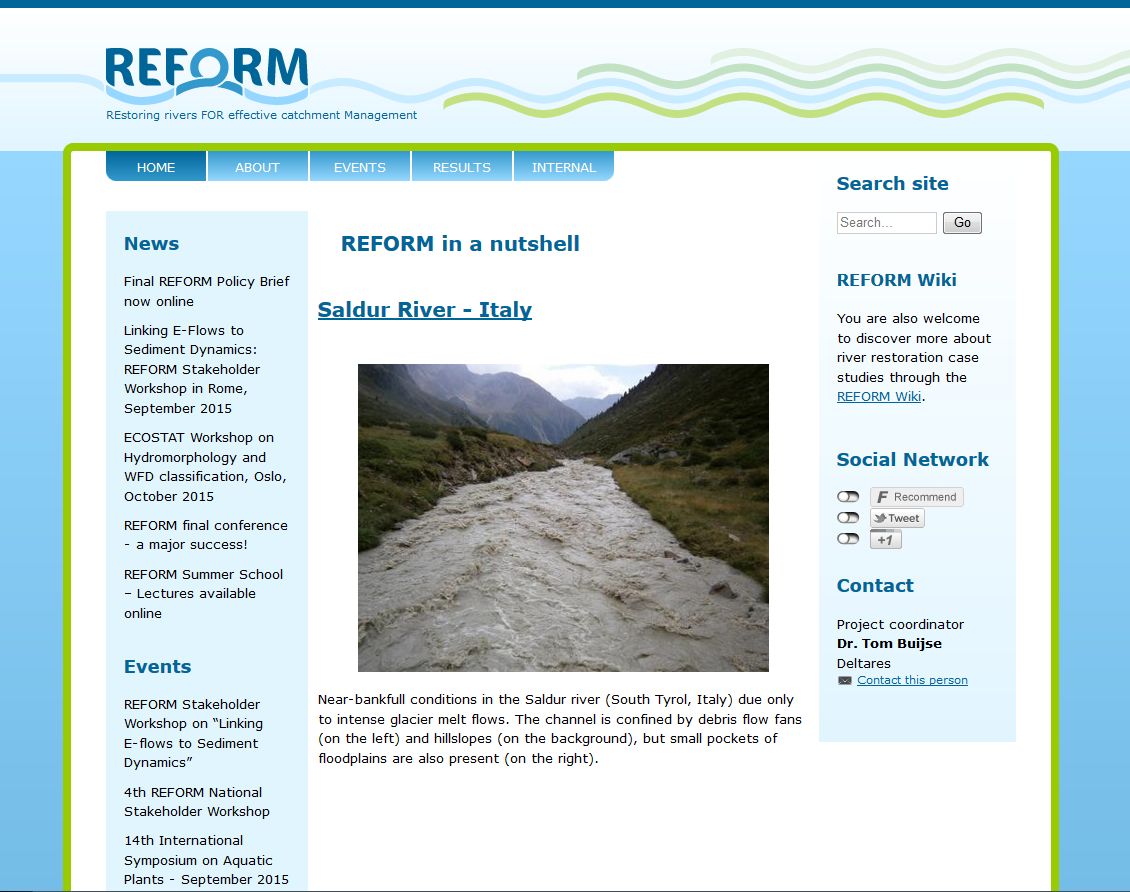Inventory of River Restoration Measures: Effects, Costs, and Benefits
- Publication
- Citation
Ayres, Andrew; Holger Gerdes; Brandon Goeller et al. 2014: Inventory of river restoration measures: effects, costs, and benefits. Berlin: Ecologic Institute.
The deliverable 'Inventory of River Restoration Measures: Effects, Costs, and Benefits' was published in January 2014 as part of the FP7 REFORM project. Scientists at Ecologic Institute led the work in collaboration with several European partners, including economists and ecologists. The information in the deliverable will help river basin managers by providing examples of how representative data on the costs and benefits of river restoration can be gathered and analysed to support the drafting of programmes of measures for the implementation of the EU Water Framework Directive. The deliverable is available for download.
The deliverable reviewed the literature on the effects, costs, and benefits of river restoration and collected these in a database to empirically investigate the costs and benefits of river restoration measures throughout Europe. Also, to inform future cost-benefit analysis, descriptions of the specific hydromorphological measures found in the database and their potential impact on aquatic plants, macroinvertebrates, and fish were provided.
The cost database assembled for the deliverable contained cost data for 766 restoration projects from Germany (n=454), Spain (n=228), the United Kingdom (n=54), and the Netherlands (n=30). The cost data for most measures varied considerably, which restricted the conclusions that could be drawn from the database. This suggests that investing efforts in gathering and incorporating cost information into decision making is a prerequisite to increase the efficiency of river restoration activities.
Ecosystem services resulting from hydromorphological river restoration were evaluated as the environmental benefits provided by restored river ecosystems and riparian zones. As a rule, a restoration project was treated as a bundle of ecosystem services, which made it very difficult to determine values for these services individually or as a whole. The majority of the economic benefits studies reviewed assumed that local households were the main beneficiaries of river restoration.
The deliverable is also available to download free of charge on the REFORM project website. These results will be used to guide cost-benefit analysis in a forthcoming REFORM deliverable.





